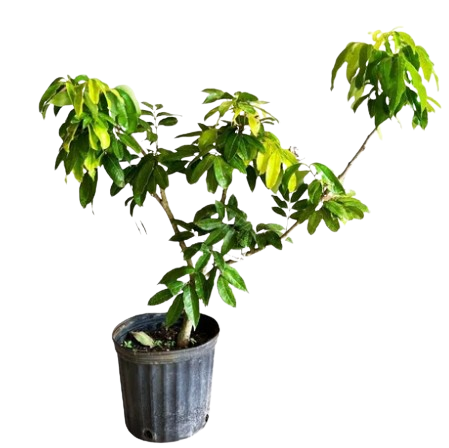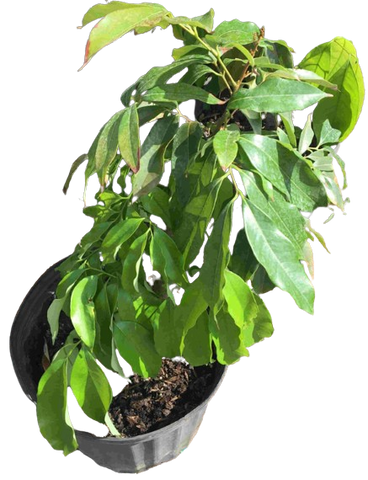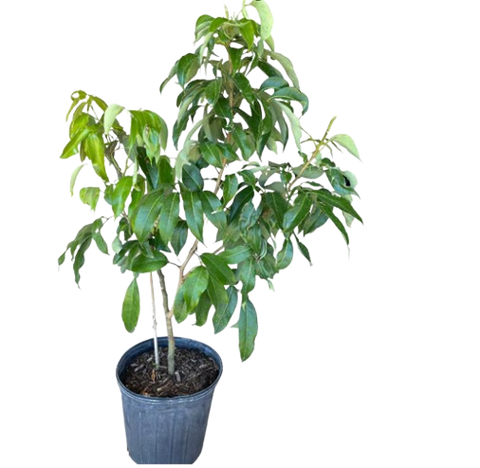In recent times, lychee trees have captured the hearts of many enthusiasts due to the delightful taste of their candy-like fruits bursting with a captivating floral fragrance. Thriving especially under the warm, humid conditions synonymous with areas such as Florida, these trees tend to spark excitement among those seeking to develop their paradisiacal treasure troves. Yet if you are aware of the best tips for planting your lychee trees then you can easily grow a healthy lychee tree.
Popular for their flavor and prolific fruiting potential, lychee trees are now cultivated across warm regions of the world, though they thrive best in high-humidity environments rich in organic matter and sheltered from the wind, like their original lowland rainforest habitat. Want to enjoy juicy lychees from your own yard? Learn how to grow lychee fruit trees from our comprehensive growing guide.
Best Tips for Planting Your Lychee Tree

Can you grow lychee from seed at home? The answer is yes! With patience and care, you can grow lychees from seed.
Here are 15 key tips for getting your lychee trees off to the best start.
Choose the Right Variety
Picking the right lychee tree is very important. You want a type that will grow well where you live. Look at the weather and soil in your area. Some good options are Brewster, Mauritius, and Emperor lychees. These seem to do well in many places.
Select a Suitable Location
Lychee trees love lots of sunshine and good air moving around. Find a spot that gets full sun most of the day. Avoid places with too much shade or no breeze. Good airflow helps keep lychee tree care easier.
Prepare the Soil
Lychees like sandy soil that drains fast but still has lots of nutrients. The perfect pH for the soil is between 5 and 7.5 - not too acidic or alkaline. Mix in some compost, peat moss, or manure to get that light, loamy texture lychee trees want.
Test the Soil
This is one of the most neglected tips for planting your lychee tree! Do a simple soil test to analyze the pH and nutrients. Little kits let you collect a sample and get the readings. If the pH is off, add some lime to raise it or sulfur to make it more acidic.
Planting Time

Spring is the ideal season for planting new lychee trees after the last frosts are gone. This lets the tree get established with warmth and sunshine as it settles into the garden. The roots can spread out before winter dormancy begins. Where do lychee grow best? These subtropical trees thrive in humid tropical and subtropical areas.
Dig a Proper Hole
How to plant litchi the right way? When you're ready for planting day, dig a hole that's wide and not too deep. Make it at least twice the diameter of the lychee's root ball, but only as deep. Loosening the soil in the planting hole prevents compacting the roots.
Spread the roots out horizontally in the hole before backfilling partway with soil. Gently tamp down as you fill to prevent air pockets. Create a modest basin around the base to catch water during deep watering sessions.
Planting Depth
When you put the lychee tree in the hole, make sure it's at the same depth as it was growing in the nursery pot. Don't plant it too deep down or the roots may get no air and could grow a litchi tree from seed properly. This crucial tip for planting your lychee tree shouldn’t be ignored!
Give the tree a good watering right after planting to help the soil settle in with no air pockets around the roots. But don't make it a muddy mess either.
Put Down Some Mulch
Once the tree is in, cover the area around it with a thick mulch layer like wood chips or bark pieces. The mulch helps keep moisture in the soil for the tree's lychee tree care. It also stops weeds from growing and stealing water and nutrients.
Feed That Tree
Use a balanced fertilizer containing nitrogen, phosphorus, and potassium to nourish your tree regularly. Check the package for how much and how often to apply. An annual feeding in early spring as the tree wakes up is a must. Proper lychee tree care includes fertilizing, pruning, and pest management. Diligent care ensures a healthy, productive plant for years.
Prune It Good
Remove any dead, damaged, or diseased limbs right away so they don't spread problems.
You can also prune to shape the tree and open up the inner canopy. Good airflow and sunlight penetration help discourage pests and diseases on the tree. An open, managed shape makes lychee tree care much simpler.
Stake The Baby Trees

Newly planted lychee trees benefit from some supportive staking, especially in windy yards. Use a sturdy stake tied loosely to the slender trunk to hold it upright. This allows the root system to establish without the tree blowing over.
Be On Guard
Keep an eye out for any pests or diseases that may try to sneak in and attack your lychee tree. Common issues include sap-sucking pests like aphids, scales, and fungal infections that can impact the tree's vigor.
Prune
Lychee trees should be pruned annually to remove diseased, dead, or crossing branches and to thin overly dense growth. This opens up the canopy to allow light and air penetration. Target inward-facing branches, branches growing toward the center of the tree, and vertical shoots from the main branches. Also, remove suckers sprouting from the base of the trunk.
Be Patient, Little Seedling
Don't get frustrated if your new lychee tree doesn't make fruit for a few years. It takes time for lychees to get big and strong enough to bloom and make lychee fruit grow. Sometimes 3 or 4 years before the first harvest!
Harvesting
To harvest lychees efficiently, avoid plucking single fruits unless immediately consuming them. Instead, collect whole clusters using pruning shears, snipping off stems bearing multiple ripe specimens. Be aware that maturation times vary between branches, so you may need to revisit your tree frequently, typically every three to four days across several weeks.
Conclusion
Want to grow lychee trees? Everglades Farm has you covered with lychee trees for sale! For over 50 years, we've been growing and shipping the healthiest, most vigorous tropical fruit trees.
Our lychee trees for sale in Florida are locally grown, ensuring they thrive in your climate. We have thousands of trees ready for pick-up or super fast delivery to your door. At Everglades Farm, our passion is providing quality plants that produce abundant harvests. All our trees get expert care and pruning for maximum health and vitality. Contact us today to buy Lychee trees for sale in Florida!
FAQs
Are there any specific pests to watch out for when growing lychee trees?
Yes, scale insects and mealybugs pose a threat. Regular inspection and implementation of preventative measures such as introducing beneficial predatory bugs (like ladybird beetles) can help control these unwanted visitors.
What climate is best for growing lychees?
Lychee trees adore a humid, subtropical environment with an abundance of both rain and heat. For optimal growth, they prefer USDA hardiness zone ranges between 10-11, which provides year-round temperatures ranging from a cozy 65°F to a balmy 90°F.
Can lychees be grown as a houseplant?
Absolutely! Your living room might become the backdrop for growing your own lychee fruits. Simulate its favored outdoor conditions within bright, sunlit, indoor spots while ensuring steady warmth and hydration.
Disclaimer- The information provided in this content is just for educational purposes and is written by a professional writer. Consult us to learn more about tips for planting your lychee trees.
Also Read: 10 Ways On How To Grow And Care For Lychee Fruit Tree




0 comments